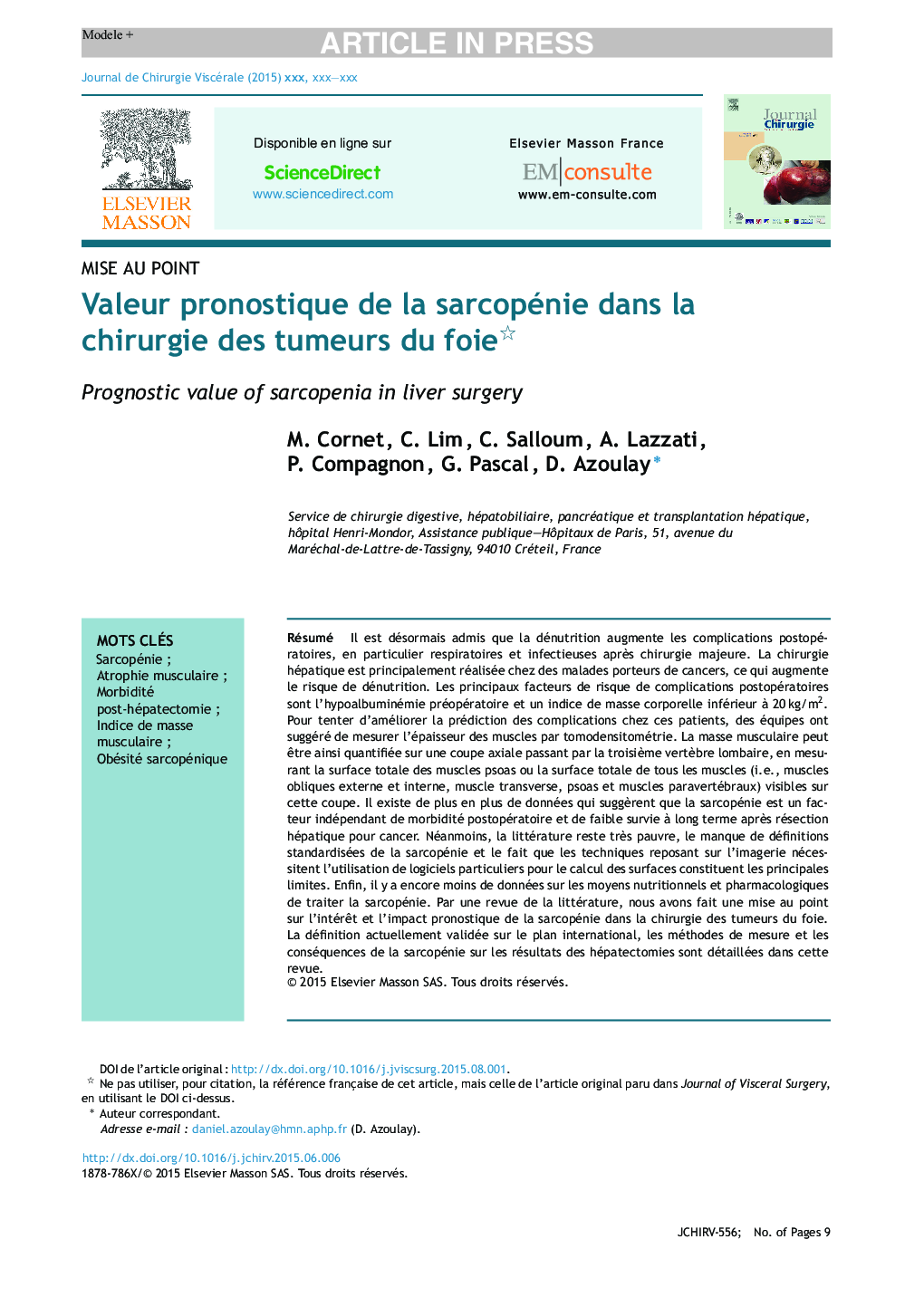| Article ID | Journal | Published Year | Pages | File Type |
|---|---|---|---|---|
| 6098823 | Journal de Chirurgie Viscérale | 2015 | 9 Pages |
Abstract
Current knowledge indicates that malnutrition increases the rate of postoperative complications, particularly respiratory and infectious, after major surgery. Almost all liver surgery is performed in patients with cancer, a factor that increases the risk of malnutrition. The primary risk factors for postoperative complications are preoperative hypo-albuminemia and a body mass index less than 20Â kg/m2. To improve the prediction of complications in these patients, some teams have suggested measurement of muscle thickness by computed tomography. Muscular mass can thus be quantified by measuring the total surface of the psoas muscle or the total surface of all muscles (i.e. external and internal oblique, transverse, psoas and paravertebral muscles) seen on an axial CT slice at L3. As well, data exist suggesting that sarcopenia is an independent predictive factor of postoperative morbidity and poor long-term survival after resection for cancer. Nonetheless, the literature on the subject is limited, there are no standardized definitions for sarcopenia, and the need of special software to calculate the surfaces limits its usefulness. Lastly, there are little if any data concerning the nutritional or pharmacologic means to treat sarcopenia. This update, based on a literature review, deals with the value and the prognostic impact of sarcopenia in surgery for liver tumors. The current definition of sarcopenia, validated internationally, the methods of measurement, and the consequences of sarcopenia on the outcome of liver resections are detailed in this review.
Related Topics
Health Sciences
Medicine and Dentistry
Gastroenterology
Authors
M. Cornet, C. Lim, C. Salloum, A. Lazzati, P. Compagnon, G. Pascal, D. Azoulay,
